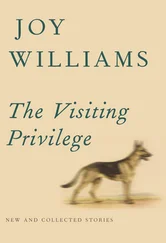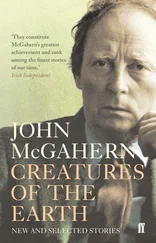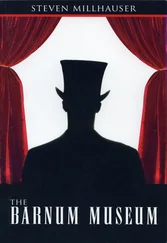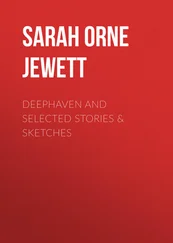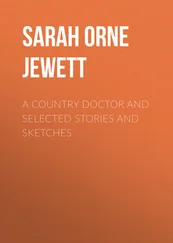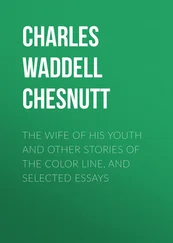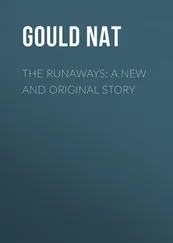He hoped, he then said, in a very polite voice, that I would permit him to put a few questions to me. I gave him a shrug and a sure, why not, and he proceeded to ask about my work, my home, my health, my retirement plans, and the degree of happiness I felt, when I contemplated my life. There were many opportunities, he said, at The Next Thing, for improving the quality of your life, each day and over the long haul. Some people moved directly from their current line of work into the same line of work at The Next Thing, at a higher salary and with a wide range of investment opportunities. Others preferred to enter one of the many training programs available at all levels. Still others were unsure, or afraid of change, and for them there were programs that addressed their fears and uncertainties. He himself, he said, had at first resisted the chance to improve his life, so he knew the kinds of fear that could get in the way. He asked me to fill out a form, which included questions about my salary, the estimated worth of my home, and the degree of happiness or unhappiness I felt, in my work and in my personal life. I would receive a letter within three weeks. At the end of the interview, if that’s what it was, he stood up and shook my hand. “We believe we can help,” he said. When I smiled and replied that I didn’t need help, he gave me that direct look of his and said, “That’s exactly what we mean.”
I thought about those words on the escalator, but even on the way down I was distracted by signs of change. Below me, on each side of the escalator, I saw an arched surface stretching from aisle to aisle. Only at the bottom did it begin to make sense: each arch was a roof, spread overhead at a height of some twenty feet. The arched roofs, which covered every aisle, were attached to the edges of shelves and had been fitted with track lighting. The roofs, I knew instantly, were an attempt to overcome the oppressive height of the shelves, and it pleased me to see that The Next Thing had understood its mistake and done something about it. I say it pleased me, but that isn’t all of what I felt. It bothered me, too — bothered me, I mean, that it was making an impression on me, bothered me that it pleased me, if I can put it that way.
Then I became aware that the new roofs had brought about another change. The loading platforms had disappeared. In their place, along the stretch of shelves that were waist high, was a series of black squarish panels. Each panel was supplied with a screen and two buttons, one red and one white. A clerk stepped over to me and explained how it worked. When you pushed the red button, rows of simple pictures — a clock radio, a floor lamp, a desk organizer — appeared on the PD screen. PD, he said, stood for Product Display. When you touched a picture with your finger, different versions of the item were shown on the screen. You selected the version you wanted by touch. Then you punched the white button, and the item was released from its upper shelf to a bin at your feet; the bin was flush with the shelves and had a handle at the top that allowed you to pull it open. The panels, called Virtual Boxes, were activated by a smart card, available to members of The Next Thing.
There were lines of people at the PD screens, and an air of confusion here and there, but all in all the replacement of the loading platforms struck me as a good idea. The aisle-roofs made you forget the towering shelves, the bins opened easily, and the PD screens were simple to use, once people got the hang of it. I figured the design engineers must have invented some way of cushioning the fall of high-up goods. Then I saw that I was getting drawn into things — I who had no interest in such places. But even as I drew my mind back and warned myself against the pull of the Under, I found myself walking along, listening to the sound of items dropping into the bins, searching for the place where it all came to an end.
For a while I felt lost in the aisles, which never ran for long distances but were always being intersected by systems of shelves at right angles. This, I thought, was like the new aisle-roofs — it was intended to keep you from feeling uneasy in the presence of vast spaces. You could see they wanted to tame the bigness, break it into little neighborhoods. As I continued left and right, I became aware of separate groups of checkout counters, scattered through the Under. And a question came to me, one that I was surprised I hadn’t thought of before. How did people get their carts back upstairs? You could see shoppers on up escalators, holding bags, but what about the larger items, the lawnmowers and charcoal grills, the exercise bikes and Adirondack chairs, what about the heaped-up carts? A clerk in a tan shirt and green tie, who must have noticed my puzzlement, came up to me and asked if he could be of help. On hearing my question, he led me to a group of checkout counters. Behind them stood a row of what he called Returnways. These, he explained, were specially designed escalators with broad steps built to hold large items and entire shopping carts. The exit points of the Returnways, he said, were all located outside the perimeter of the upper building. You rode up to a system of moving walkways, which carried you over to the parking lot.
As I made my way through the aisles, I noticed that I was passing many Relaxation Corners, which seemed to have multiplied since my first visit. Some of the RCs, as people were calling them, now contained odd-looking structures: broad six-foot-high cylindrical columns, with wraparound screens showing views of different regions of the Under. On the screens you could see people filling their carts, checking the Virtual Boxes, moving along. The columns, a clerk informed me, were called Viewing Towers. They were there to help aisle coordinators check traffic flow. I thanked him and continued on my way. I was thinking about the towers when I suddenly found myself at the end of an aisle, looking out again into tracts of dark. But things had changed, even here.
The barren stretch of dirt was level and smooth, a smell of tar was in the air, and in the shadows I saw a yellow asphalt-paver moving slowly along, with a big roller behind it. The construction fence was gone. Farther away I saw a stand of black trees, with a faint glow over them. Through the trees, deep in the dark, I could make out a play of lights. They seemed to flicker, the way lights do when you see them through leaves. For some reason, probably because of the rumors, the flickering lights seemed to me the lights of streetlamps and house windows, in an invisible town, out there in the dark. And I seemed to hear, along with the clatter of shopping carts, and voices in the nearby aisles, the dim sounds of a summer night: laughter on a front porch, dishes rattling through an open kitchen window, a shout, a screen door shutting, a thrum of insects.
I turned back into the Under. It was very bright. There was a steady sound of goods dropping into bins, and all up and down the aisles you could see people lifting items out of the bins and putting them in their carts. Then it seemed to me that I was about to understand something, as I stood there watching the shoppers and listening to the unheard sounds of an invisible town. It was the sort of feeling you can get when you’re standing on a beach at night, looking off at the dark waves, out toward where the night and the water come together, except that I was standing one hundred and eighty feet under the ground at the edge of the Under, looking down the length of an aisle, and what I was about to understand had something to do with the sound of goods falling into the bins and the flickering of those lights through the trees, but whatever it was I lost it, there at the edge of things.
I returned from my second visit as if I had voyaged to another country and come home to the familiar chair by the familiar lamp. The meeting in the cubicles, the Food Park, the PD screens, the lights flickering through the trees, all this seemed strange and unlikely in the clear light of a Saturday afternoon in summer. On my block, kids were playing catch. You could see sprinklers on the lawns, and in the air you could hear blue jays, electric hedge-trimmers, the bang of a hammer. Had I really been where I’d been? The whole visit was shot through with another feeling, an impression that is difficult to pin down. I think it was an impression of wariness, as if I didn’t know what it was I’d just seen. Oh, I knew what I’d seen. I don’t mean that. But there was some other thing I hadn’t seen, something behind or within the things I was seeing. How can I explain it? The cubicles, the Under, it had all begun to work on me — that was clear enough. But I knew I wasn’t going back there, not for a while. It’s impossible to say why. But it was as if the place was too powerful, so that if you went back you’d be caught in some way.
Читать дальше

